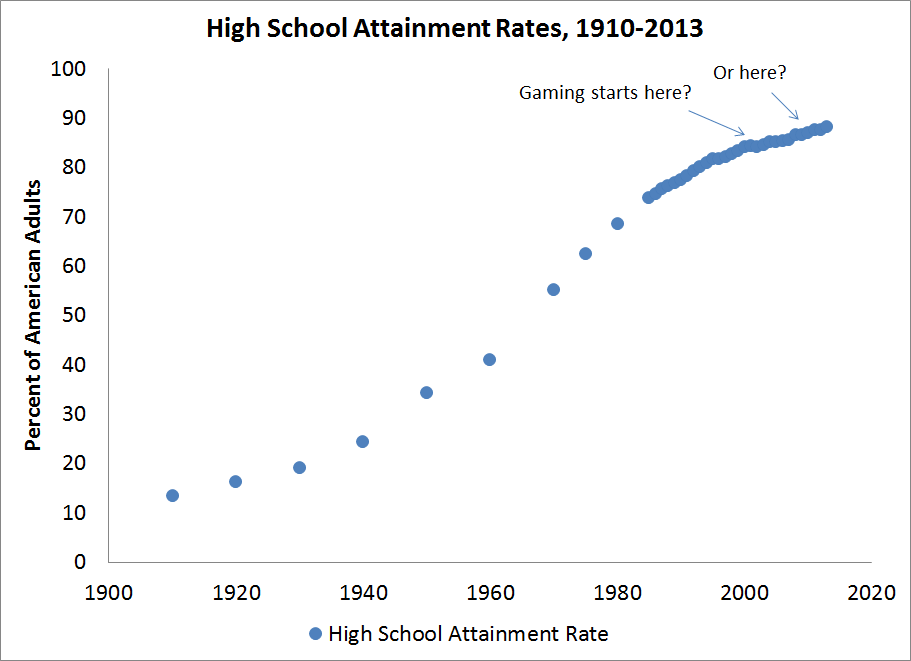NPR had a great feature this week about high school graduation rates and whether we can really trust recent increases. NPR’s entire suite of work is fantastic journalism and I encourage you to check it out; my personal favorite is this interactive series focused on individual students.
And yet, the coverage leaves out a few crucial details. NPR chronicles all the reasons not to trust current high school graduation rates, but they don’t give much guidance on how to weight the various elements at play. Schools might be “juking the stats” by changing which students count. Worse, they might be shuffling students who don’t deserve a diploma through low-quality “credit recovery” programs where little actual learning takes place. On a positive note, school districts have also gotten much better at predicting which students are the least likely to graduate and then providing extra support so that they do. NPR doesn’t really attempt to adjudicate between these factors or tell us which one(s) matter(s) most.
Second, one section of NPR’s coverage talks about a relatively new method for calculating graduation rates, called the “adjusted cohort graduation rate.” It’s a more honest method for calculating graduation rates because it follows individual students through their high school experience and “adjusts” each school’s denominator based on whether those students transfer or drop out or new students join. (NPR’s coverage implies that states can “game” graduation rates by allowing students to graduate with less than full diplomas, but the adjusted cohort calculation only counts students who attain a regular diploma.) As of 2011, all states have been required to use this more rigorous method for calculating graduation rates. But graduation rates are rising no matter how you count them.
Perhaps most importantly, NPR focuses on the last 10-15 years and ignores the longer trend. If they had pulled in historical data, readers might have been left with a slightly different impression than one where schools are artificially gaming graduation rates. The chart below shows the full historical trend from 1910 to 2013 (data come from Table 104.10 here). It represents the percentage of the adult population with a high school diploma or a GED (the data don’t allow us to separate the two going back that far, but the GED accounts for about 3 percent of the increase).

A pessimist’s take on rising graduation rates might “blame” the 2002 passage of No Child Left Behind, or the more recent introduction of online credit recovery programs. But looking at the long-term chart, it’s very hard to make the case that gaming is the sole cause of the gains. (You’d also have to believe that schools never gamed the stats until 2002.)
The truth lies somewhere in the middle. Not all students who receive a high school diploma actually deserve it. This has probably always been true. Still, individuals are better off staying in school and graduating than dropping out. NPR provides a helpful caveat that rising high school graduation rates are not pure or without flaws, but we should still celebrate progress.
Update: NPR finished the series today with a discussion of the issues I mention above and concluding that, “we have to keep in mind the possibility that broader social forces are playing a larger role than policy initiatives in influencing the percentage who graduate.”
June 12, 2015
Updated: The Pessimist’s Take on Rising High School Graduation Rates?
By Bellwether

Share this article
More from this topic
Preparing Students for Life, Not Just More School: Lessons from D.C.’s Sojourner Truth Montessori
Education Reformers Using Bad Language: “Growth”
Artificial Intelligence Cohort for Education and Youth-Serving Organization Leaders
No results found.